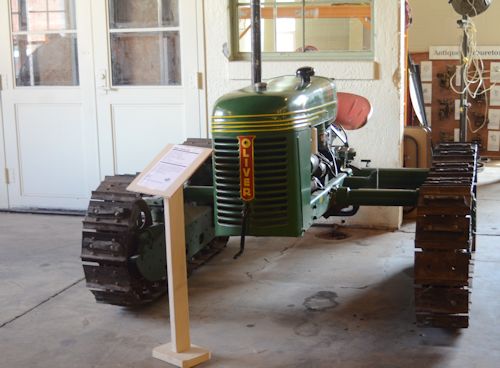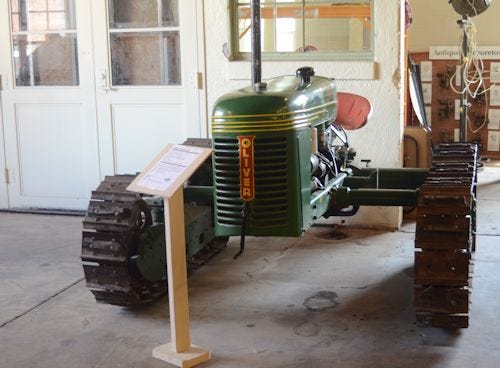
You see it often. A tractor breaks down after years of use, and is left where it stands. It's a common thread among antique tractor aficionados, and the places they find their next project ranges from the side of a field to a river bottom – In Jerry Kohl's case, the Republican River near Hardy, Nebraska, about 150 miles southwest of Lincoln.
"This one had rolled off to the side, and the unique thing was it was right along the Republican River," says Kohl. "As it happens, I didn't know it at first, but as we looked into the history of this tractor, I actually worked on this tractor as a kid."

The Oliver Cletrac, a crawler tractor with tracks wide enough for two-row cultivation, wasn't the most common tractor in the Midwest, unless you farmed near a river. "Where I grew up, we had three or four farmers in the whole area that used crawlers and they were all on the river," Kohl says. "It wouldn't compact the dirt in the field, and it would work in fields that wheeled tractors would get stuck in."
Kohl grew up two miles away from the river helping his dad in his machine shop, and found himself working on the same 1948 Oliver Cletrac HG tractor 40 years later.
The Cletrac, a crawler tractor with tracks wide enough for two-row cultivation, wasn't the most common tractor in the area. At only four feet tall, the tractor was more often found in orchards – which required a lower tractor. "Where I grew up, we had three or four farmers in the whole area that used crawlers and they were all on the river," Kohl says. "It wouldn't compact the dirt in the field, and it would work in fields that wheeled tractors would get stuck in."
The waiting
Those tracks turned out to be the easy part of the restoration. "The cost of repairing the tracks is one of the reasons you don't see many tracked tractors restored. They're almost always totally worn out," Kohl says. Roughly a year beforehand, the owner had replaced the track pins – normally a significant expense. "Instead of being completely worn out the pins and tracks themselves were almost new."
Fortunately, Kohl was able to use most of the original parts. The hard part was seeking out and waiting for parts that needed replacing. This included a radiator from Virginia, a grille from Canada, a gas tank from western Nebraska, two steering clutch bands from a local shop in Lincoln, and numerous parts for the engine, which were actually available at Napa Auto Parts, since the engine is still manufactured for air compressors. "It's kind of a scattered mess when you're putting a tractor together."
However, little by little, the tractor came together. After five years of restoration and hunting for parts – sometimes for as long as two years at a time – and with the help of his son, grandsons, and the vocational auto mechanics class at Lincoln East High School, the tractor was restored to its former glory and donated to the Larsen Tractor Test and Power Museum next to the Nebraska Tractor Test Lab in Lincoln, where it sits to this day.
"The students learned a lot about mechanical theory, about operation of an engine, of a drivetrain. They learned patience in taking things apart, getting new parts, and putting it all back together," he says. "And the challenge in getting it to work once everything came together. Everyone cheered when it started for the first time."
About the Author(s)
You May Also Like






